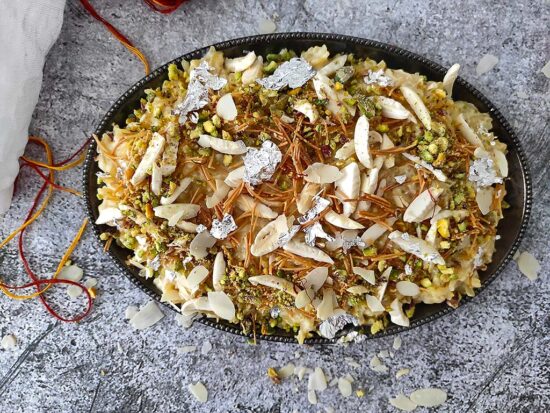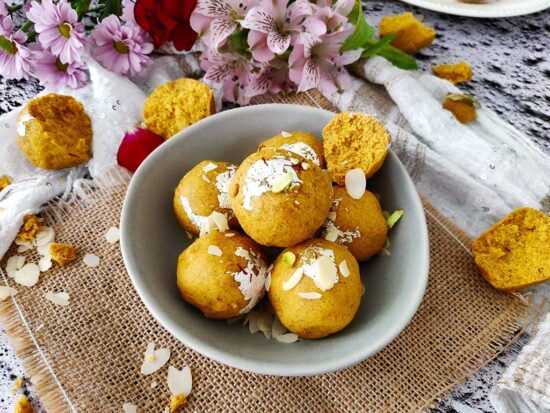This Indian sweet is an entirely milk-based dessert and good full-fat milk is a key to make the best Indian Milk cake. For this recipe, the creamier the milk, the better texture it is. This very elegant yet delicious sweet requires only 4 basic ingredients that are easily available at home:
• Full Cream milk
• Sugar
• Ghee
• Milk Coagulant
Kalakand or Alwar ka mava has its origin in the city of Alwar from where its popularity has spread across the globe.
Alwar Kalakand or Alwar ka Kalakand or Alwar ka Milk Cake as this is more popularly known as is created by the curdling of milk giving it its beautiful brown coloured centre.
Alwar Ka Mawa cake is a sweet-milk fudge with a grainy texture made with solidified cream milk, sugar, ghee, and some acidic agent. Milk is reduced to 1/3rd, and then it is cooked further with some milk coagulant. Once reduced it is then cooked with sugar, and lastly, some ghee is added to this thick milk solid. This sweet is entirely cooked in a heavy bottom pan. This mithai is also known as Kalakand.
Best coagulant for milk cake:
For this sweet usually, alum powder is used to curdle the milk. But you can also use any from the below list:
• teaspoon lemon juice
• teaspoon citric acid powder
• cup yogurt
The texture and the size of milk protein granules vary with the different types of coagulant agents and their amount.
Some tips and tricks:
Milk cake’s ideal texture is grainy. If you want grainy, yet melt-in-mouth and soft milk cake then you need to make sure you add only a little coagulant in the milk. If you would add so much acidic agent, then the milk cake would turn rubbery and chewy. Always use full-fat milk.
If you want a good grainy texture of milk cake, then make sure you are adding lemon juice only after the milk has reduced to 1/3 of its quantity.
So enjoy this festive season this very special mithai from Rajasthan – Alwar ka mava or milk cake.










